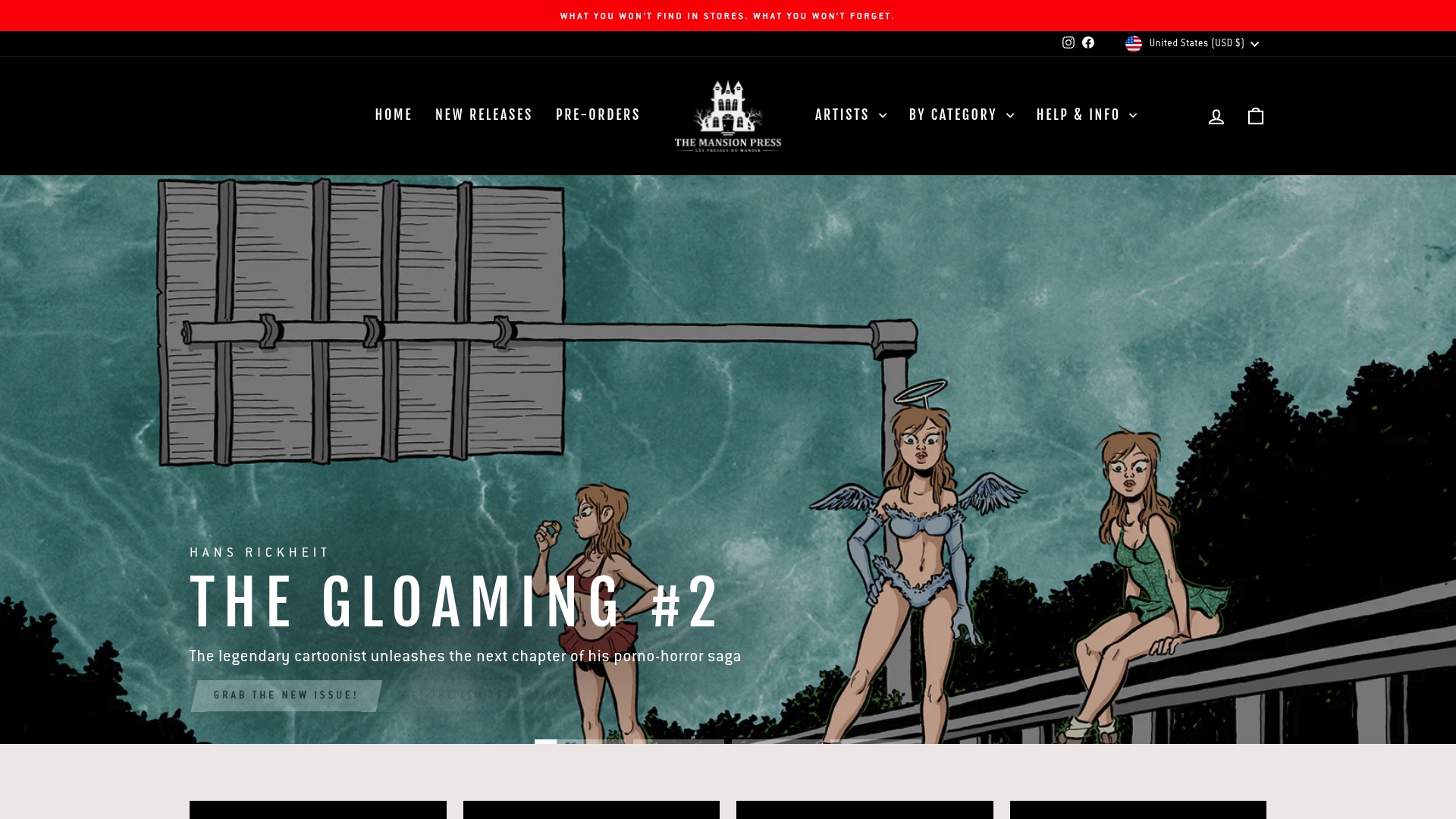Experimental Storytelling in Comics: Complete Guide
Over 75 percent of comic artists say they experiment with unconventional storytelling at some point in their careers. Readers crave more than just familiar heroes in neat boxes, and creators are answering with wild stories that break the usual rules. From breaking up the classic panel grid to crafting non-linear journeys, these bold approaches make comics feel new and unpredictable, offering fans truly interactive and thought-provoking experiences.
Table of Contents
- Defining Experimental Storytelling In Comics
- Major Types And Narrative Techniques Used
- Key Artists And Landmark Works
- Impact On Art Collecting And Fandom
- Challenges, Missteps, And Market Considerations
Key Takeaways
| Point | Details |
|---|---|
| Revolutionizing Narrative Structure | Experimental storytelling in comics challenges conventional sequential narratives, fostering active reader engagement through innovative techniques. |
| Diverse Techniques | Techniques like decompression and the infinite canvas bring depth and interactivity, reshaping the reader’s visual experience. |
| Collectible Artform | Avant-garde styles attract collectors, emphasizing unique artistic expressions and expanding the comic art market. |
| Challenges to Acceptance | Balancing artistic innovation with market viability remains a critical challenge for creators, impacting narrative coherence and reader adaptation. |
Defining Experimental Storytelling in Comics
Experimental storytelling in comics represents a radical departure from traditional sequential narrative techniques, challenging readers’ perceptions of how visual stories can be constructed and experienced. According to research from visual storytelling experts, comics are not merely static illustrations but dynamic mediums that combine words, images, and unconventional narrative structures to communicate complex ideas.
At its core, experimental comics deconstruct traditional panel layouts, narrative progression, and visual communication. Experimental Graphic Storytelling: Exploring New Art Forms reveals that these innovative approaches often involve breaking standard reading conventions. Artists might create non-linear narratives, use asymmetrical panel designs, incorporate mixed media elements, or challenge the typical left-to-right reading sequence that most audiences expect.
The primary goal of experimental storytelling is to push artistic boundaries and engage audiences in unique, thought-provoking ways. By disrupting familiar narrative patterns, comic artists can create immersive experiences that require active reader participation. Some techniques include:
- Intentionally fragmented storylines
- Interactive panel arrangements
- Visual metaphors that transcend literal interpretation
- Unexpected juxtapositions of text and imagery
These approaches transform comics from passive entertainment into active intellectual and emotional experiences, inviting readers to become co-creators in the storytelling process.
Major Types and Narrative Techniques Used
Experimental comics employ a diverse range of narrative techniques that dramatically reshape traditional storytelling conventions. Understanding Narrative Techniques in Graphic Novels reveals the complexity of these innovative approaches, which challenge readers’ expectations and create immersive visual experiences.
One prominent technique is decompression, which according to research transforms narrative pacing by emphasizing visual details and character interactions. As defined in comic studies, decompression slows plot progression, allowing artists to explore emotional landscapes and micro-moments with extraordinary depth. This technique is particularly prevalent in widescreen comics, where expansive panel designs create cinematic storytelling experiences.
Another groundbreaking approach is the infinite canvas concept, primarily emerging in digital and web-based comics. This technique eliminates traditional page constraints, allowing creators unprecedented freedom in spatial storytelling. Artists can design narratives that scroll infinitely, creating non-linear experiences that blur boundaries between reading and interactive exploration.
Key experimental narrative techniques include:
- Fragmented storytelling
- Non-linear chronological progression
- Multiple simultaneous narrative perspectives
- Interactive panel designs
- Visual metaphors that transcend literal interpretation
- Unconventional panel shapes and arrangements
These techniques transform comics from linear media into dynamic, immersive art forms that challenge readers’ perceptual and cognitive expectations.
Here’s a comparison of major experimental storytelling techniques in comics:
| Technique | Description | Key Impact |
|---|---|---|
| Decompression | Slows narrative pacing for detail & depth | Emotional immersion |
| Infinite Canvas | No page limits; digital, scrollable stories | Non-linear, interactive reading |
| Fragmented Storytelling | Breaks up storyline sequences | Requires active reader engagement |
| Non-linear Progression | Events not in chronological order | Challenges reader expectations |
| Mixed Media Elements | Blends illustration, text, other media | Multisensory storytelling |
| Unconventional Panels | Irregular shapes & layouts | Unique visual rhythm, disruption |
Key Artists and Landmark Works
Experimental comic art has been dramatically shaped by innovative creators who push the boundaries of visual storytelling. Understanding Unique Illustration Styles: A Deep Dive highlights the incredible diversity of approaches that challenge traditional comic narrative structures.
One remarkable example of experimental storytelling is Matt Madden’s ‘99 Ways to Tell a Story: Exercises in Style’, a groundbreaking graphic novel that demonstrates the incredible narrative flexibility of comics. According to research, Madden reimagines a simple story through 99 different stylistic interpretations, showcasing how the same narrative can be transformed through varied visual and structural approaches.
Digital platforms have also revolutionized experimental comics, with works like Stu Campbell’s ‘Nawlz’ emerging as landmark interactive experiences. This cyberpunk webcomic integrates multiple storytelling elements, combining animation, music, text, and interactive design to create a truly immersive narrative experience that transcends traditional comic book formats.
Key artists who have significantly contributed to experimental comics include:
- Chris Ware (known for complex, architectural page designs)
- Dave McKean (pioneering mixed-media narrative techniques)
- Scott McCloud (theoretical and practical innovator in comic storytelling)
- Lynd Ward (early graphic novel pioneer)
- Marjane Satrapi (blending personal memoir with unique visual styles)
These artists have consistently challenged the conventional boundaries of comic storytelling, transforming the medium into a sophisticated form of visual art and narrative expression.
Impact on Art Collecting and Fandom
Experimental storytelling has fundamentally transformed the landscape of comic art collecting, creating new avenues of appreciation and investment. Understanding Collecting Rare Comics Guide for Enthusiasts reveals how innovative narrative techniques have dramatically expanded the collector’s perspective beyond traditional comic book formats.
Research indicates that avant-garde comic styles have increasingly attracted collectors interested in unique artistic expressions. Techniques like glitch art and rotoscope-inspired rendering have introduced entirely new aesthetic dimensions, turning experimental comics into highly sought-after collectible items. These innovative approaches challenge conventional visual narratives, making each piece a potential museum-worthy artifact.
The growing enthusiasm for experimental comics is evident in specialized educational programs and collector communities. Courses like ‘Storytelling for Comics: Explore Action and Perspective’ demonstrate the expanding interest among enthusiasts who view these works as more than simple entertainment—they’re considered complex artistic statements that push creative boundaries.
Key factors driving experimental comic art collecting include:
- Unique narrative complexity
- Innovative visual techniques
- Limited edition and rare production runs
- Artistic conceptual depth
- Cross-genre storytelling approaches
Collectors now view experimental comics as dynamic art forms that represent cutting-edge visual storytelling, bridging traditional comic book culture with contemporary artistic expression.
Challenges, Missteps, and Market Considerations
Experimental storytelling in comics confronts significant challenges that test the boundaries between artistic innovation and market viability. Recognizing Original Comic Art: A Collector’s Guide highlights the complex landscape artists navigate when pushing traditional narrative boundaries.
One notable challenge is the decompression technique, which has sparked considerable debate within the comic industry. Research indicates that this storytelling approach, characterized by stretching narrative moments across multiple pages, has been criticized for potentially diluting content density. Some critics argue that decompressed storytelling can lead to thinner narrative experiences, potentially reducing reader engagement and impacting sales performance.
The infinite canvas concept presents another intriguing yet problematic innovative approach. Digital platforms have enabled creators to experiment with non-traditional narrative structures, but this technique faces significant skepticism. Navigation challenges and departure from traditional comic reading experiences create barriers to widespread adoption, making it difficult for experimental works to achieve mainstream acceptance.
Key challenges facing experimental comic storytelling include:
- Balancing artistic innovation with market expectations
- Maintaining narrative coherence
- Managing production costs
- Overcoming reader adaptation resistance
- Ensuring economic sustainability
- Preserving narrative clarity
Successful experimental comics must ultimately bridge the gap between artistic vision and audience comprehension, requiring creators to innovate strategically while maintaining fundamental storytelling principles.
Elevate Your Comic Art Collection With Experimental Storytelling
Are you fascinated by comics that shatter boundaries, experiment with narrative techniques, and leave a lasting impression? The article on experimental storytelling in comics outlines how new approaches like decompression and the infinite canvas can challenge expectations but also create confusion for collectors and readers. One of the biggest pain points is finding authentic, limited-edition comics and original artworks that truly showcase these experimental forms. Many fans struggle to access rare titles, unique visual styles, or exclusive pieces that embody this innovative spirit.

Bring the avant-garde off the page and into your collection today. Discover rare artbooks, collector’s comics, and original artwork from groundbreaking creators at The Mansion Press. Experience curated selections that reflect the complexity and artistry discussed in our guide to collecting rare comics or dive deeper into creative processes with tips from our narrative techniques resource. Stand out as a collector who prizes originality. Visit The Mansion Press now before these exclusive editions are gone.
Frequently Asked Questions
What is experimental storytelling in comics?
Experimental storytelling in comics refers to innovative narrative techniques that challenge traditional sequential formats, allowing artists to explore complex ideas through non-linear narratives, unique panel designs, and interactive elements.
What are some common techniques used in experimental comics?
Common techniques include decompression, infinite canvas, fragmented storytelling, non-linear progression, mixed media elements, and unconventional panels, each aiming to enhance reader engagement and create immersive experiences.
Who are some notable artists in the field of experimental comics?
Notable artists include Matt Madden, Chris Ware, Dave McKean, Scott McCloud, Lynd Ward, and Marjane Satrapi, each of whom has contributed significantly to pushing the boundaries of visual storytelling in comics.
How has experimental storytelling affected comic art collecting?
Experimental storytelling has expanded the collector’s perspective, attracting those interested in unique artistic expressions and innovative narrative techniques, thus turning experimental comics into sought-after collectibles and significant artistic statements.
Recommended
- Creating Avant Garde Comics: A Complete Step-by-Step Guide – The Mansion Press
- Understanding Narrative Structure in Graphic Novels – The Mansion Press
- Understanding Narrative Techniques in Graphic Novels – The Mansion Press
- Understanding Nurturing Creativity in Comics – The Mansion Press
- Understanding Content Storytelling for Business Growth

